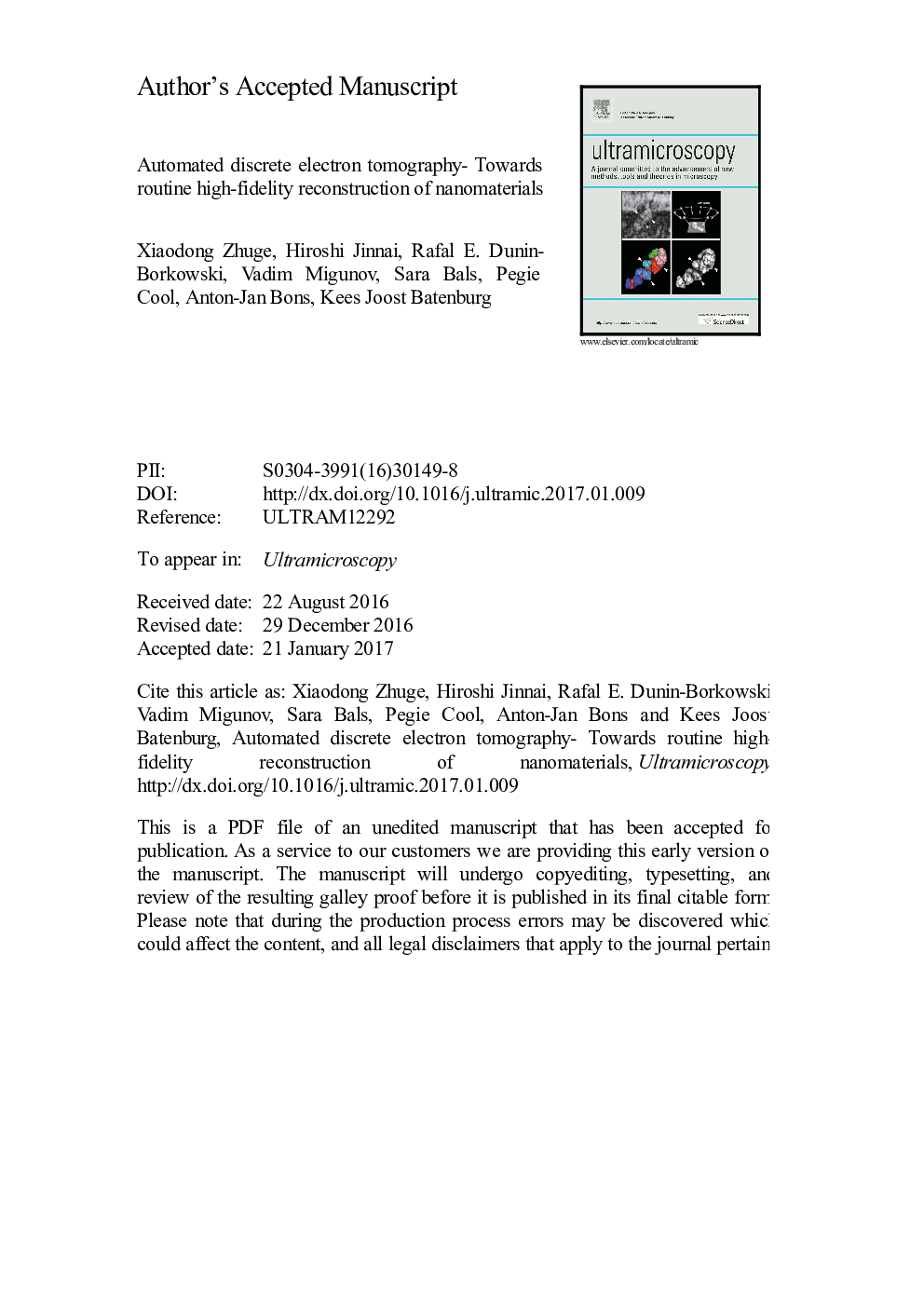| Article ID | Journal | Published Year | Pages | File Type |
|---|---|---|---|---|
| 5466825 | Ultramicroscopy | 2017 | 14 Pages |
Abstract
Electron tomography is an essential imaging technique for the investigation of morphology and 3D structure of nanomaterials. This method, however, suffers from well-known missing wedge artifacts due to a restricted tilt range, which limits the objectiveness, repeatability and efficiency of quantitative structural analysis. Discrete tomography represents one of the promising reconstruction techniques for materials science, potentially capable of delivering higher fidelity reconstructions by exploiting the prior knowledge of the limited number of material compositions in a specimen. However, the application of discrete tomography to practical datasets remains a difficult task due to the underlying challenging mathematical problem. In practice, it is often hard to obtain consistent reconstructions from experimental datasets. In addition, numerous parameters need to be tuned manually, which can lead to bias and non-repeatability. In this paper, we present the application of a new iterative reconstruction technique, named TVR-DART, for discrete electron tomography. The technique is capable of consistently delivering reconstructions with significantly reduced missing wedge artifacts for a variety of challenging data and imaging conditions, and can automatically estimate its key parameters. We describe the principles of the technique and apply it to datasets from three different types of samples acquired under diverse imaging modes. By further reducing the available tilt range and number of projections, we show that the proposed technique can still produce consistent reconstructions with minimized missing wedge artifacts. This new development promises to provide the electron microscopy community with an easy-to-use and robust tool for high-fidelity 3D characterization of nanomaterials.
Related Topics
Physical Sciences and Engineering
Materials Science
Nanotechnology
Authors
Xiaodong Zhuge, Hiroshi Jinnai, Rafal E. Dunin-Borkowski, Vadim Migunov, Sara Bals, Pegie Cool, Anton-Jan Bons, Kees Joost Batenburg,
